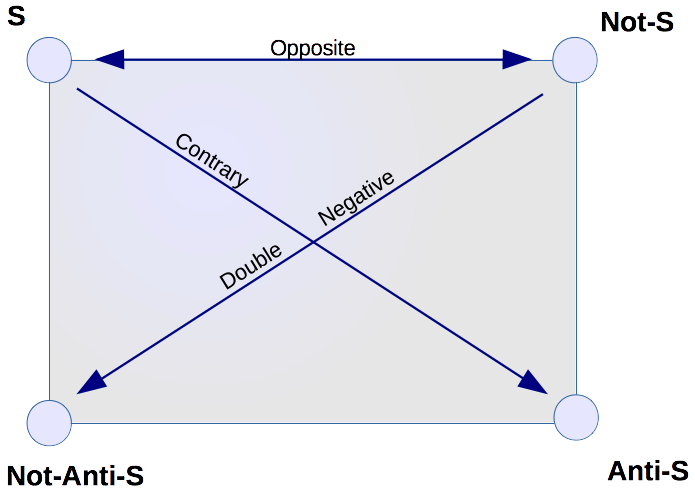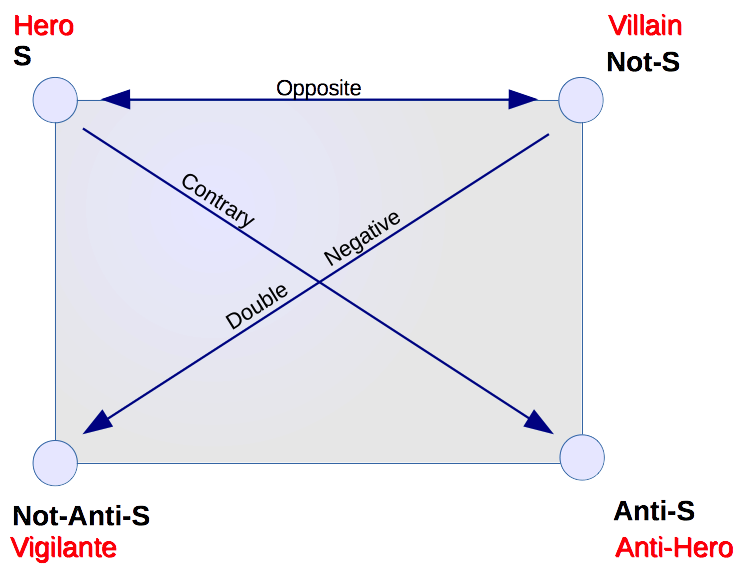Heroes, Villains, and In Between
by Larry Kollar
There are absolutes, but not as many as absolutists believe. That’s why superhero stories (comics and otherwise) have long depicted heroes with some kind of internal conflict—they’re more interesting that way. Villains, though, are often less fleshed out. They are apt to be completely evil, sometimes bent only on pointless destruction.
Halfway there, I suppose, but even a brief look at human nature tells us that most villains are portrayed unrealistically. In Beyond the Sea of Storms, the sorcerer Uxpir Kadne sums it up fairly well:
“Very few men call themselves evil. Those who do, often do so ironically or out of self-loathing. Such folk are never as terrible as they claim. But the cruelest tyrant will say he does what is necessary to keep peace and order in his realm. A hardened criminal will say he steals to gain his daily bread, his violent acts are done either in self-defense or to repay some perceived injustice by his victims. A vicious soldier says he is but carrying out orders.”
What motivates our villains? What justifications do they have for fighting the law? Would pointless destruction not be a form of insanity, rather than of evil?
Beyond that, even the hero/villain dichotomy is oversimplified. You can use a semiotic square (also called a semantic rectangle) to explore the meanings of words, and reveal implications you might not have considered. This is the basic form:

S stands for seme, which a layman might call a concept. The difference between “Not-S” and “Anti-S” can sometimes be subtle, requiring a little thought to get right. “Not-Anti-S” can be read as “neither Not-S nor Anti-S,” but the double negatives do not cancel each other out.
So this is what I came up with for hero:

The opposite of hero is villain, and its contrary is the anti-hero. But what about the bottom-left, neither villain nor anti-hero? I assigned this corner to the vigilante, someone who works outside the law to mete justice.
We know about villains; how do anti-heroes operate? Wikipedia has this to say:
Although antiheroes may sometimes do the “right thing”, it is often for the “wrong reasons” and because it serves their self-interest rather than being driven by moral convictions.
Sometimes, a character might cross a line, temporarily becoming something else. In conventional comics, The Joker (a villain) occasionally goes after the mob, thus acting as an anti-hero. His nemesis, Batman, often uses methods that are more suited for a vigilante or anti-hero than a hero. Both of them have well-developed motivations for their actions, which explains the boundary-crossing and makes them more interesting.
But we’re all the heroes of our own personal narratives. In my Skyscraper City stories, heroes uphold the law as heroes do. The villains operate outside the law, justifying their actions as redressing imbalances caused by those who pervert the law to their own ends. The lines get blurry, and as Blink soon learns, doing the right thing might not involve being a hero.
“Are you a hero, or a villain?” —Captain Heroic (to Blink)
What are your thoughts? Do villains need a motivation to be more realistic, or am I just over-thinking all this?
Subscribe via RSS
